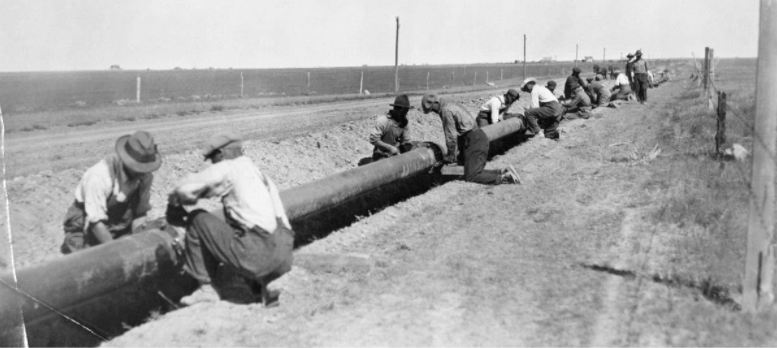The Evolution of Pipelines in Canada
Print this Article | Send to Colleague
 |
|
| Laying pipe for pipeline between Turner Valley and Calgary, southern Alberta. [ca. 1920-1929] |
It wasn’t long ago that transmission pipelines across Canada were essentially a non-topic. Pipelines rarely, if ever, made headlines and continued to operate safely while populations grew and cities expanded encroaching pipeline rights of way. Ongoing public awareness programs, designed to promote awareness of the existence of pipelines, and how to safely work and live near them, have been mandated by federal regulation since 1988. But other than pipeline easement owners and residents adjacent to those rights of way, the general public remained virtually unaware of the vast and growing network of pipelines. the safest method of transporting hydrocarbons across Canada and into the United States.
As I drove across the southern Alberta countryside recently, I crossed over innumerable pipeline rights of way spanning panoramic landscapes adorned by watercourses, farms, livestock, agriculture and various ecosystems. In between the abundance of signage promoting awareness of deer, moose, elk and bear crossings, each pipeline right of way is identified with painted “goal posts” and pipeline markers promoting an emergency number and Call/ClickBeforeYouDig – the only visual reminder that a pipeline is nearby.
Getting to this point of safety and environmental stewardship took over a hundred years of study and collaborative advancements in engineering, technology, agricultural and socio-economic development, safety and environmental science; and today, Canada is revered globally for its best-in-class pipeline design, construction and operational standards.
Learn more about the evolution of pipelines in Canada from the Canadian Energy Pipeline Association.
- Mike Sullivan

